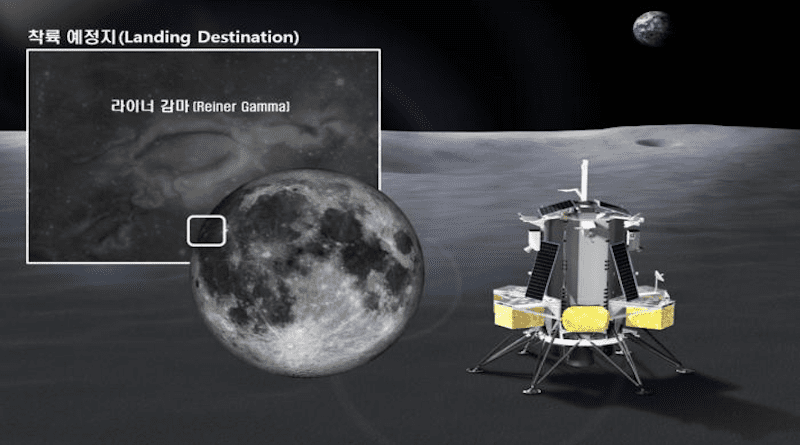Korean Scientific Payload For Observing Lunar Space Environment Begins Transfer To US For Scheduled 2024 Launch
The Ministry of Science and ICT (Minister Jong-Ho Lee, hereinafter referred to as ‘MSIT’) and the Korea Astronomy and Space Science Institute (Director Young-Deuk Park, hereinafter referred to as ‘KASI’) announced the beginning of the transfer of the lunar space environment monitor, ‘LUSEM'(Lunar Space Environment Monitor) that will be aboard United States’ unmanned lunar lander in 2024, has began on September 4th.
LUSEM is a payload developed by the Korea Astronomy and Space Science Institute (KASI) in participation with the U.S. NASA’s CLPS(Commercial Lunar Payload Services) initiative as an international lunar exploration and research collaboration. The CLPS initiative is a subset of the U.S. Artemis program, led by NASA, which aims to launch unmanned lunar landers every year to carry payloads related to scientific exploration and commercial development of the Moon. NASA is responsible for project planning and management. Contractors selected through bidding are responsible for developing, launching, landing, and operating the unmanned lunar landers. KASI plans to develop four scientific payloads* to be carried on the lander, contributing to collaborative lunar scientific exploration missions.
LUSEM is a scientific payload developed by KASI in collaboration with Professor Jongho Seon’s research team (Dept. of Astronomy and Space Science at Kyung Hee University). It is equipped with a sensor capable of detecting high-energy particles with energies of 50 kilo-electronvolts (50 keV) and above. The development was undertaken in partnership with the domestic company Satrec Initiative, which was responsible for manufacturing.
Unlike the Earth’s surface, the lunar surface lacks protection from an atmosphere or magnetic field making high-energy particles from deep space to be directly detected. These high-energy particles can have implications for the health of astronauts, the functionality of spacecraft electronics, and the structural integrity of space vehicles. Moreover, they are essential for scientific research into phenomena like space weathering on celestial bodies devoid of atmosphere. Due to these reasons, the importance of studying high-energy particles has consistently been highlighted, as they play a crucial role in future manned deep-space exploration and space science research.
Based on this necessity, NASA announced in November 2021 that LUSEM of Korea will be aboard the Intuitive Machines’ unmanned lunar lander, Nova-C, scheduled for launch in 2024. The Nova-C lander will land on the low-latitude “Reiner Gamma” region on the lunar near side. Its mission will encompass a range of tasks, including space environment observation through LUSEM, surface terrain observation, local magnetic field measurements, deployment of small cooperative autonomous rovers for exploration, and deployment of laser retroreflectors.
LUSEM consists of a sensor unit, an electronic box, and connecting harnesses. Among them, the sensor unit is the main equipment for observing high-energy particles, composed of two solid-state telescopes (SST) that enable bidirectional observations – one pointing upwards and the other downwards. Each pair of SST detects either electrons or ions. The sensors facing upward detect particles coming from space, while the ones facing downward detect particles reflected from the lunar surface. By analyzing the differences between these two measurements, valuable insights are gained. The electronic box controls the sensor unit, processes signals, supplies power, and so on.
On September 4th, after packaging for air transportation, LUSEM embarks on its journey to the United States. It will onboard a vibration-free vehicle to be transferred from Daejeon to Incheon International Airport, then transferred to Intuitive Machines of Housten, Texas by air. Subsequently, KASI will integrate LUSEM into Nova-C by early 2024 under the oversight of NASA and will conduct launch preparation Activities including the interface and functionality tests with the lander with the goal of launching in late 2024 using Falcon-9 of Space X.
Cho Sun-hak, Director General of the Space, Nuclear and Big Science Policy Bureau at the Ministry of Science and ICT, commented, “As the first collaborative project launched after signing the Artemis Agreement, its successful progression is of immense significance.” He further added, “Following the achievements of Danauri, this continuous collaboration between South Korea and the United States in the field of space exploration is truly heartening. We will strive to expand our nation’s participation scope within the Artemis program and further extend the horizon of international space collaborative research.”
Park Young-Deuk, the Director of the KASI, remarked, “LUSEM stands as a source of pride among our nation’s remarkable scientific payloads.” He expressed optimism, saying, “We anticipate that LUSEM will provide a wealth of information about the space environment crucial for the era of space exploration.”

